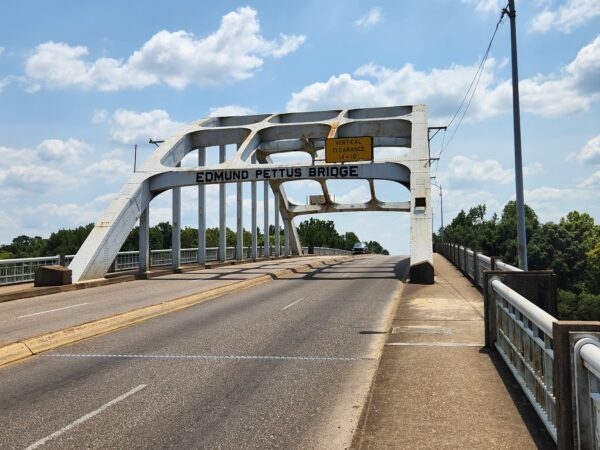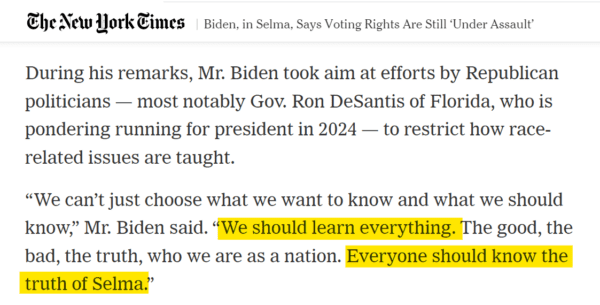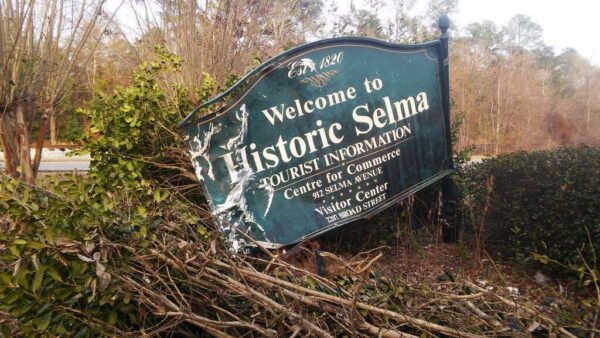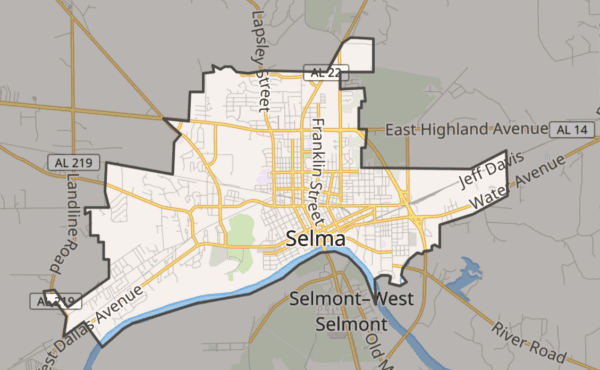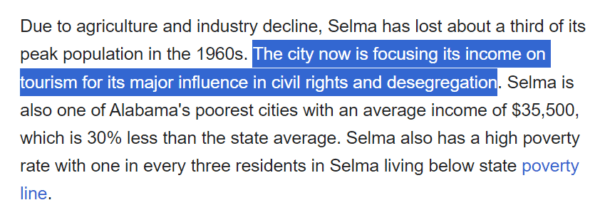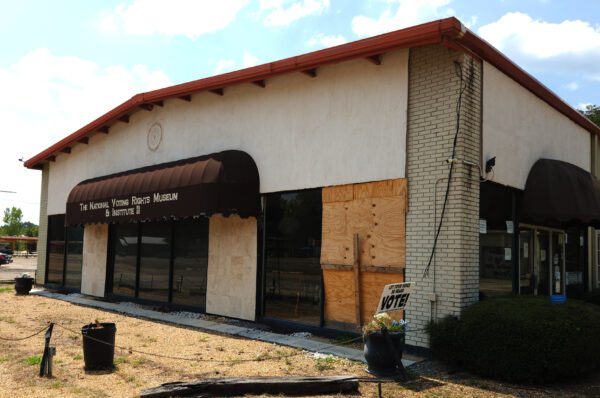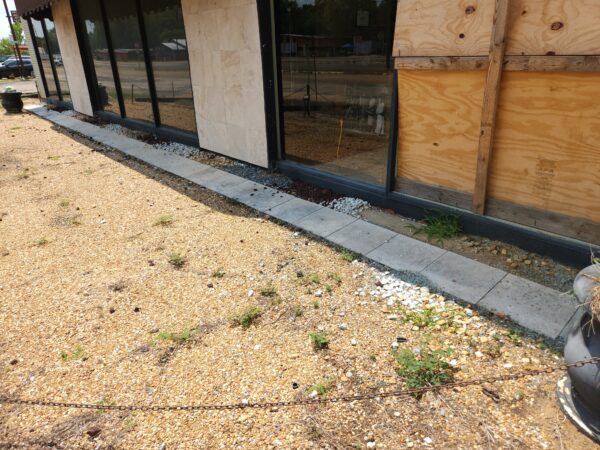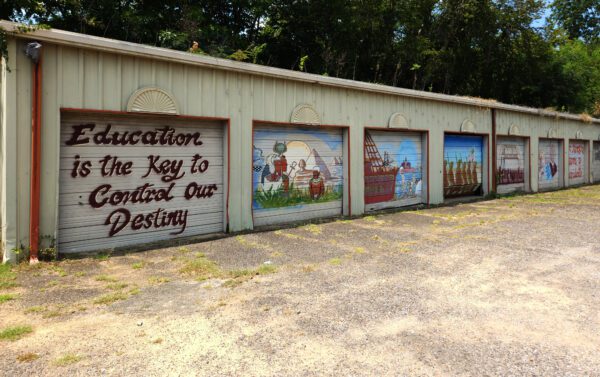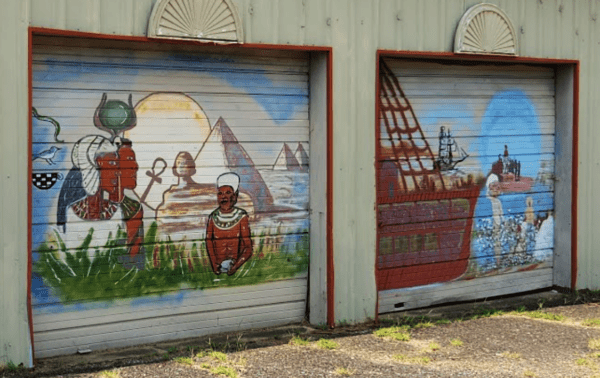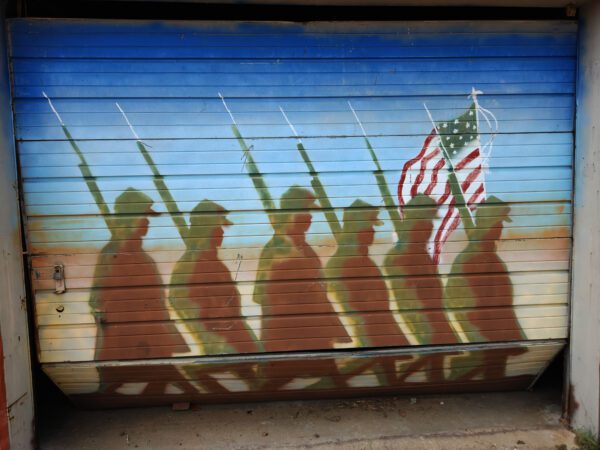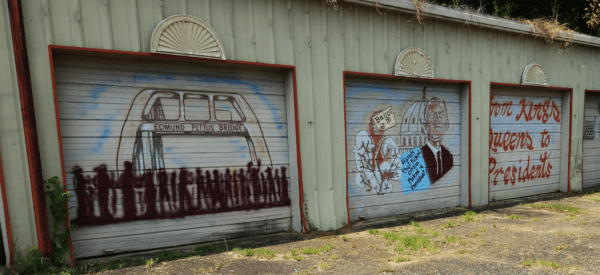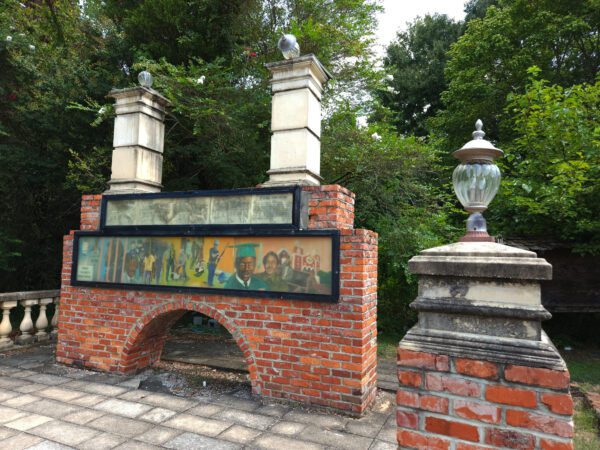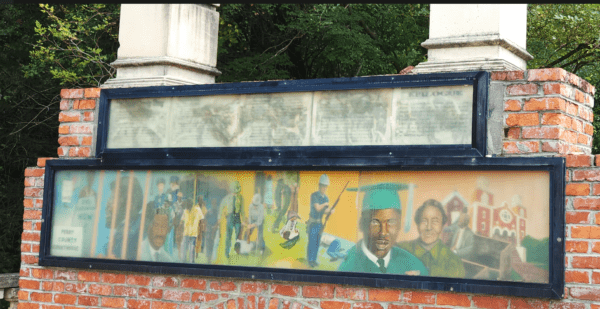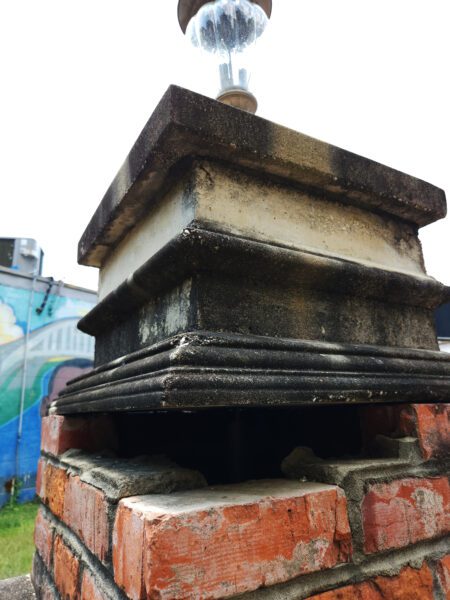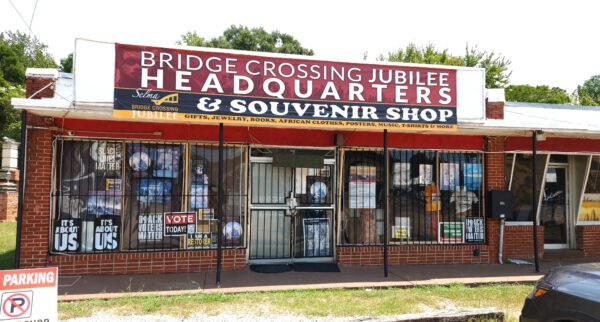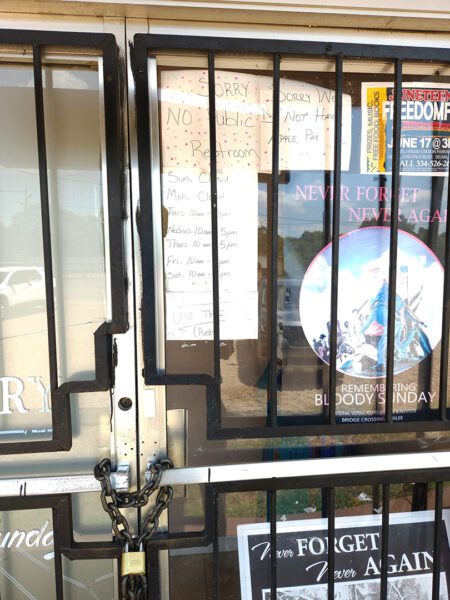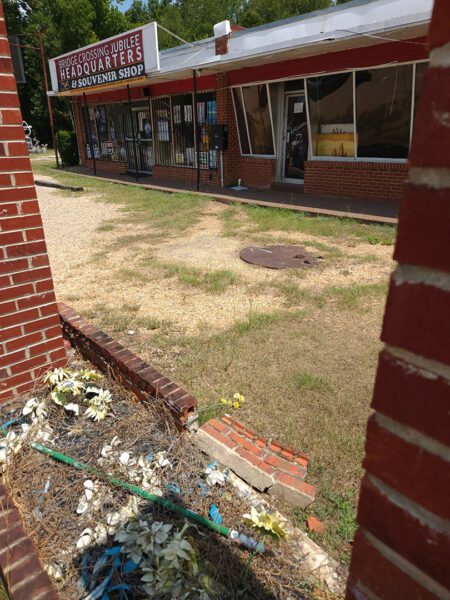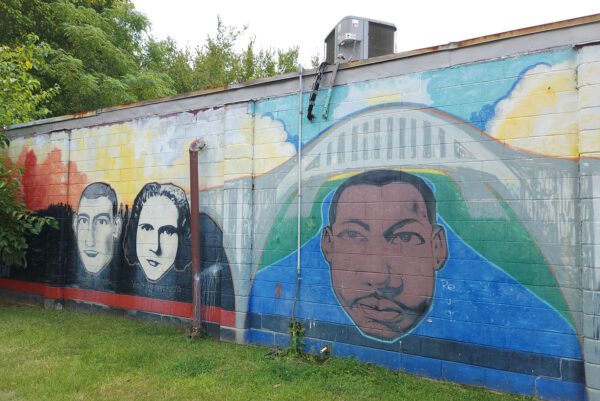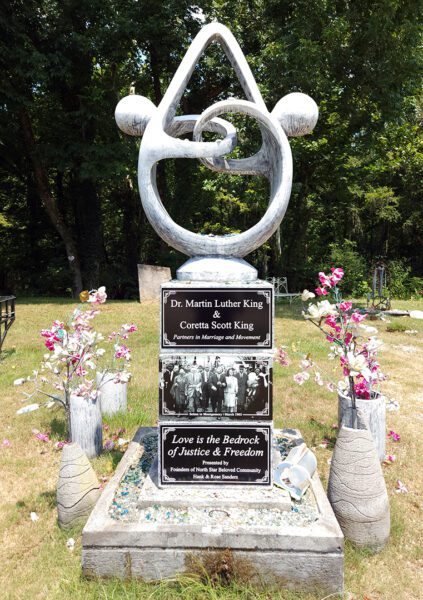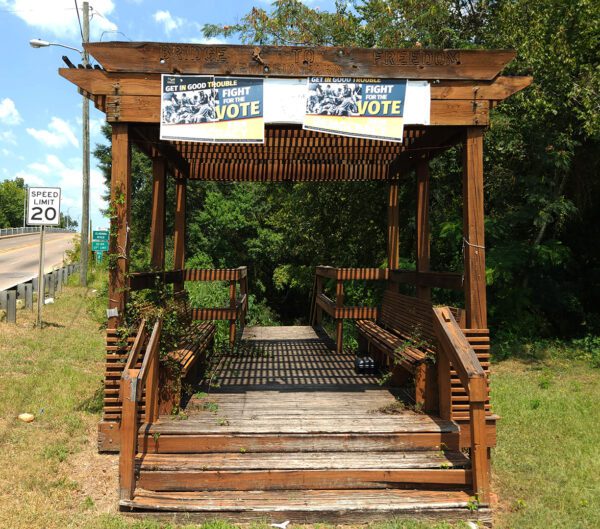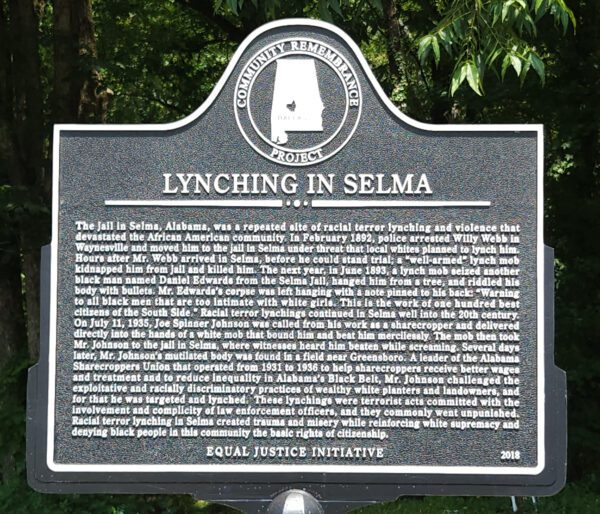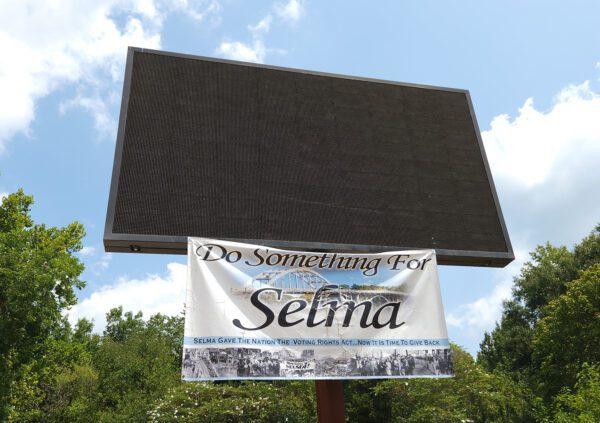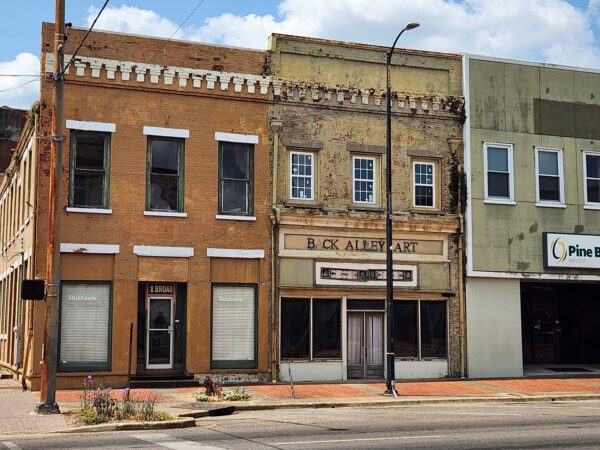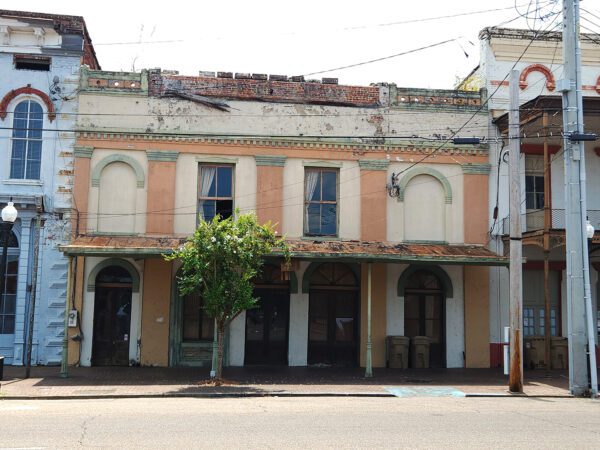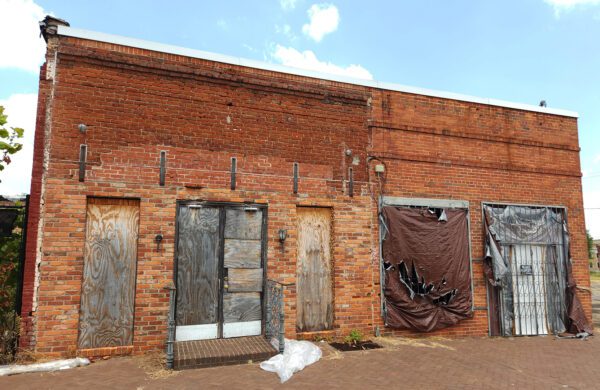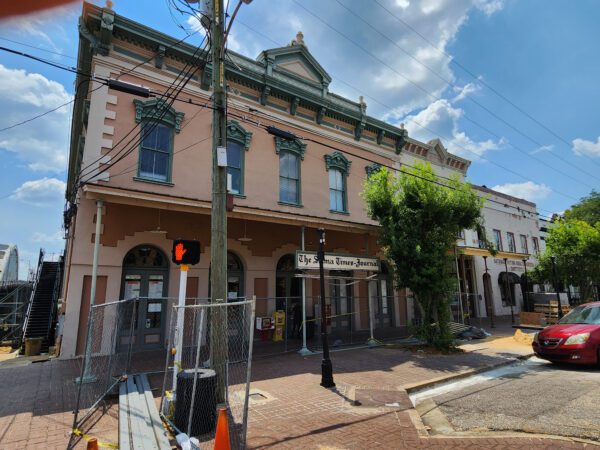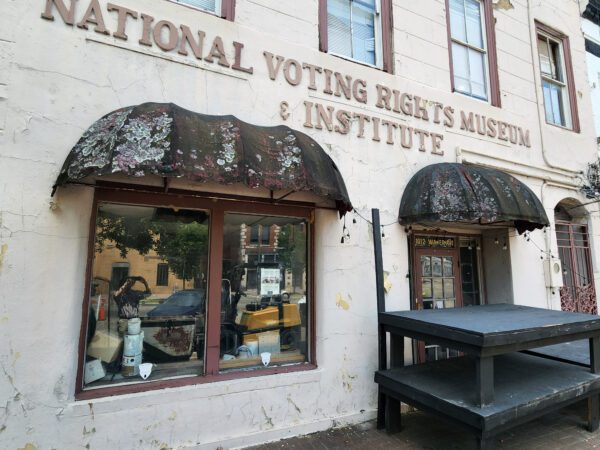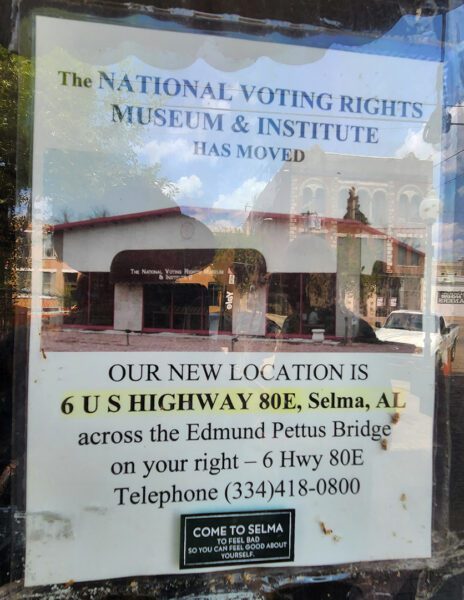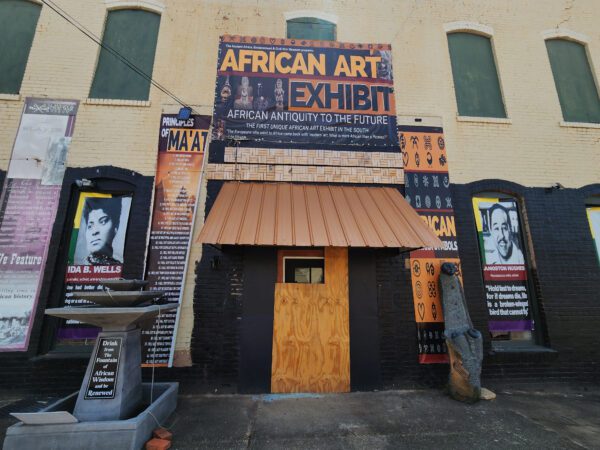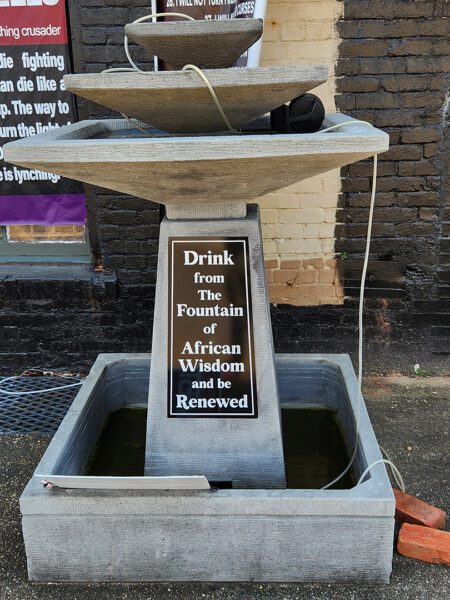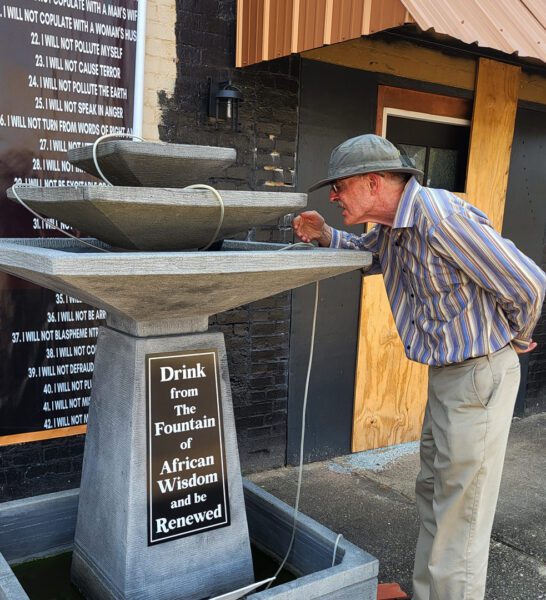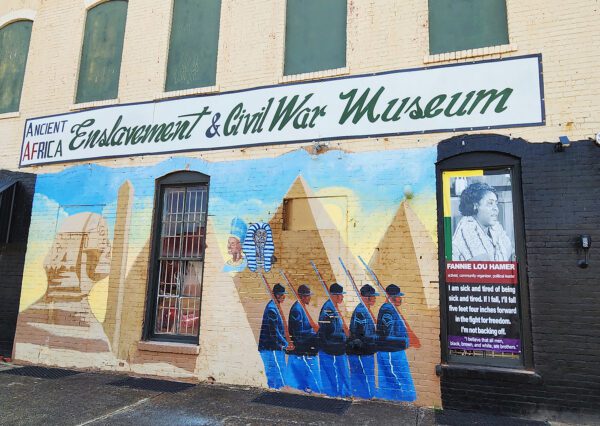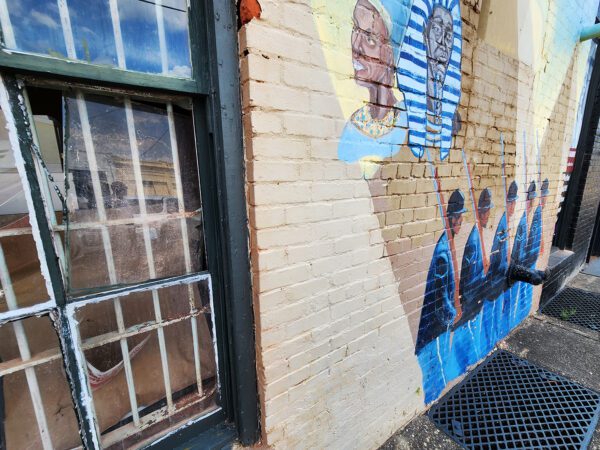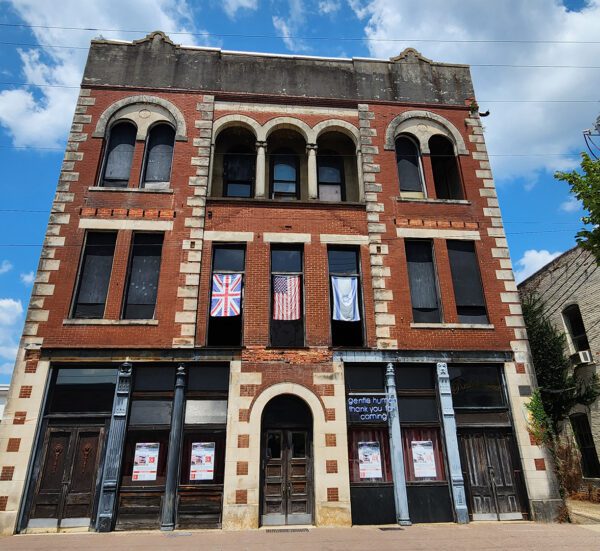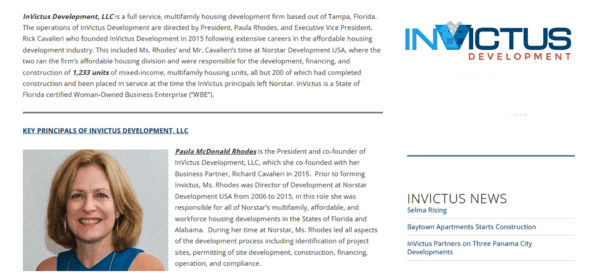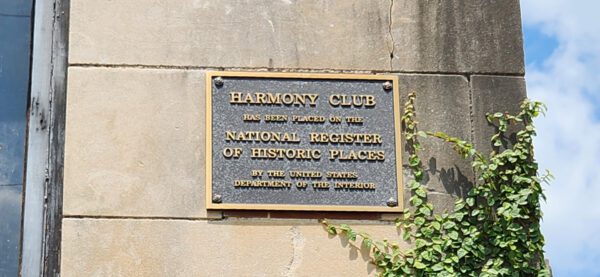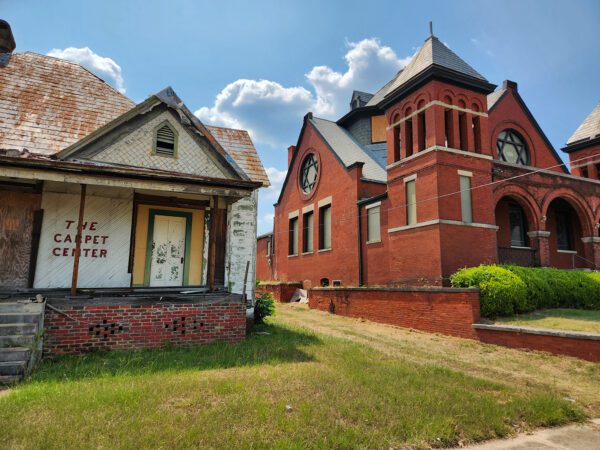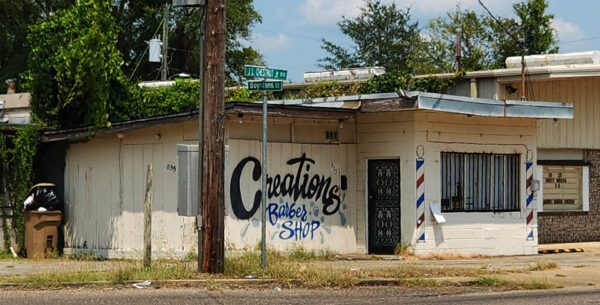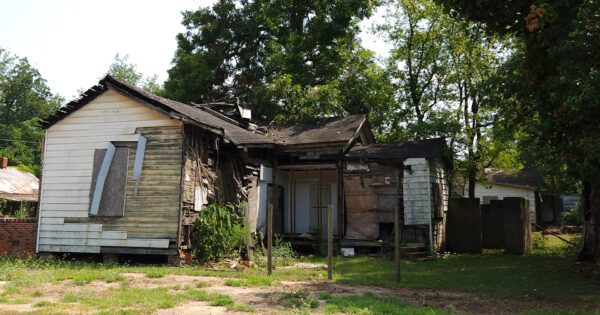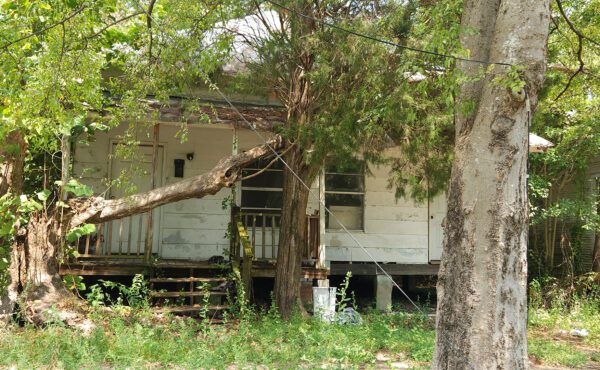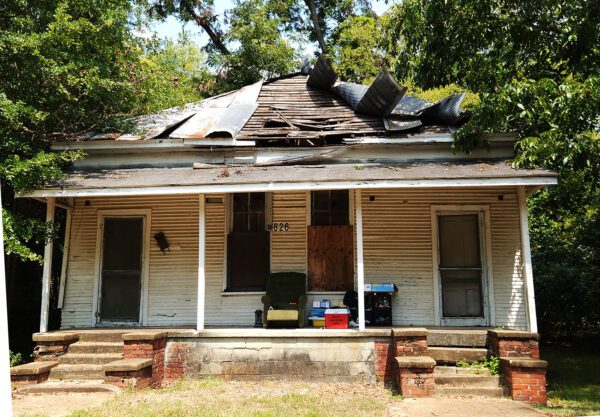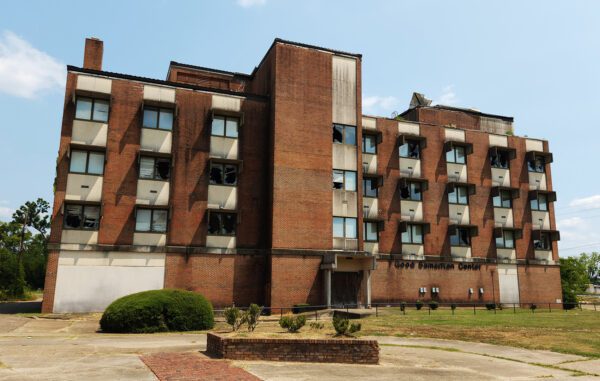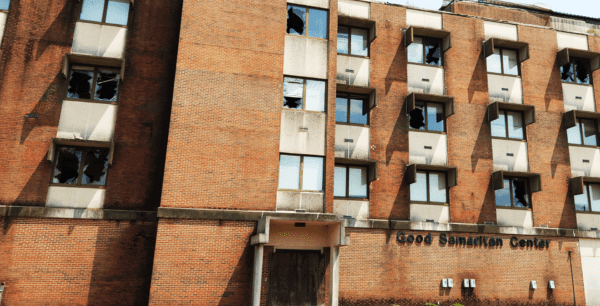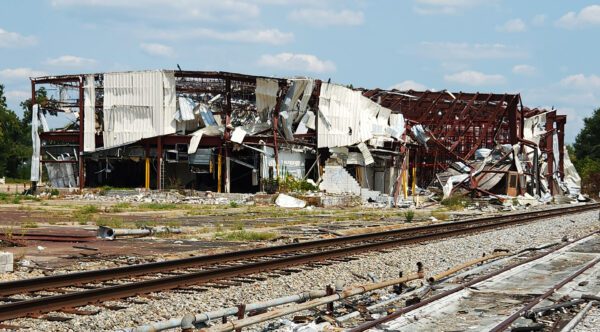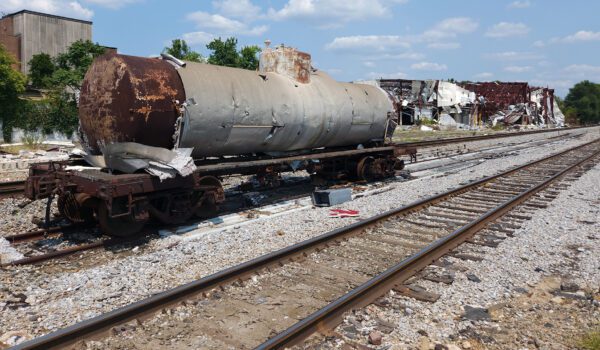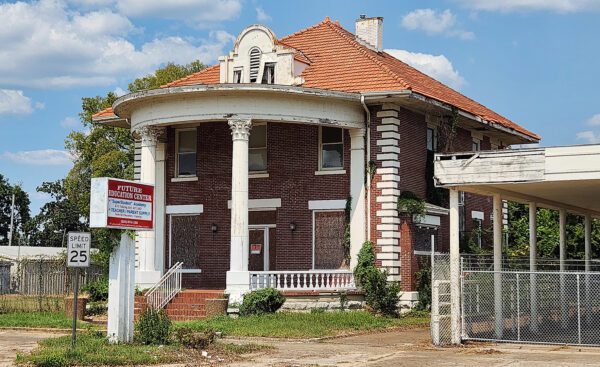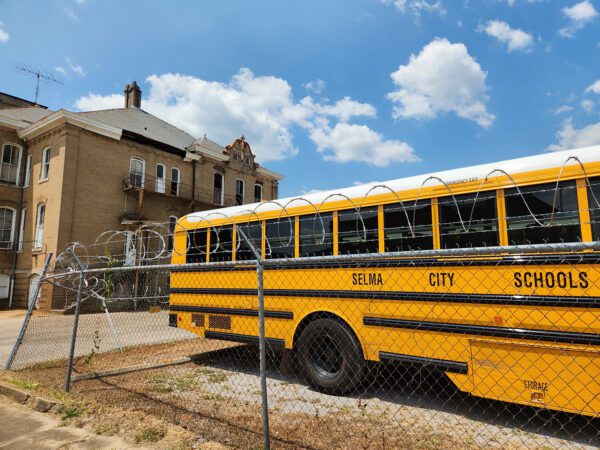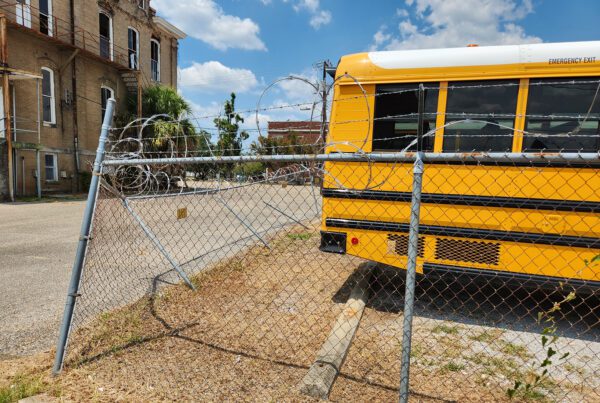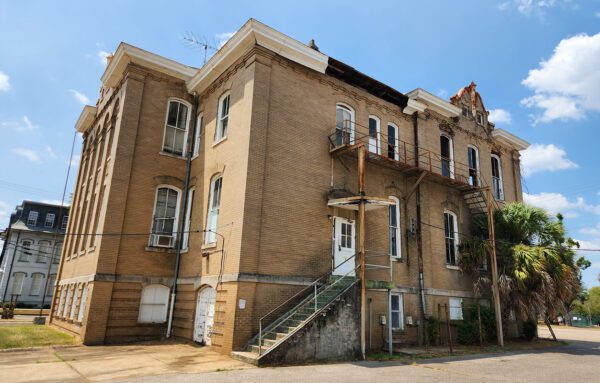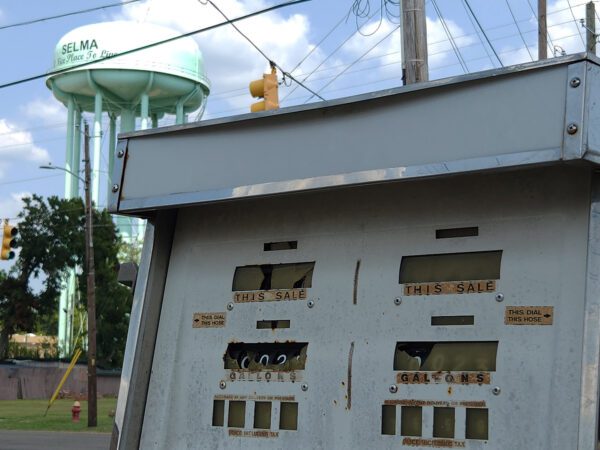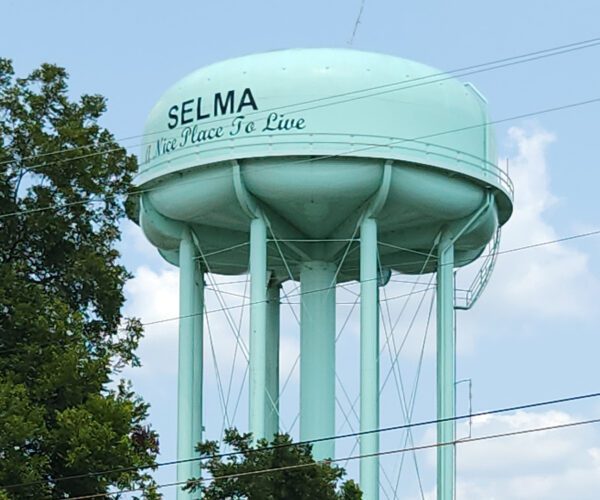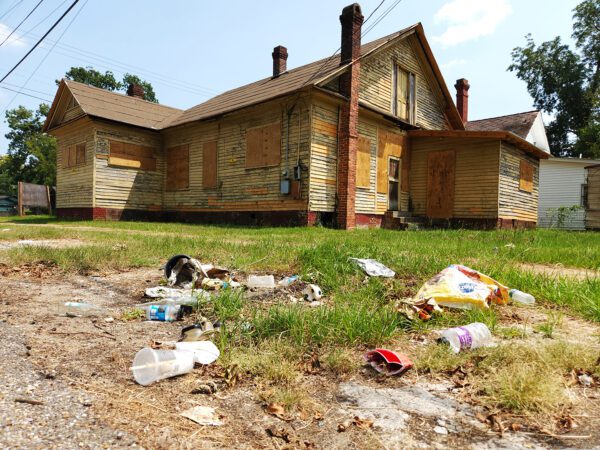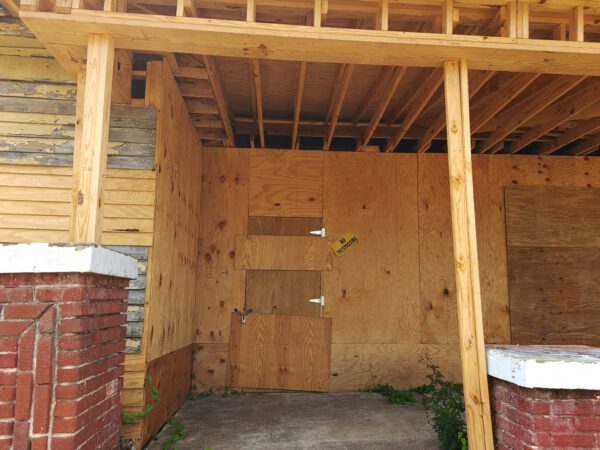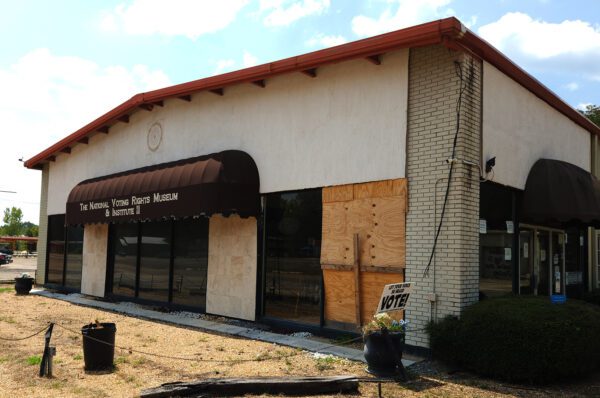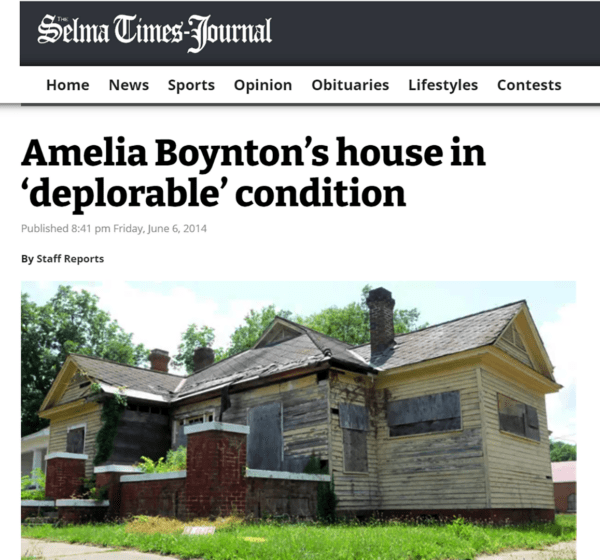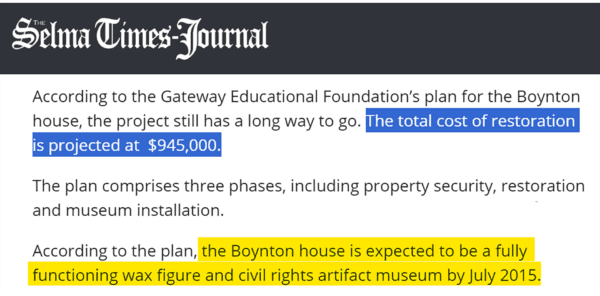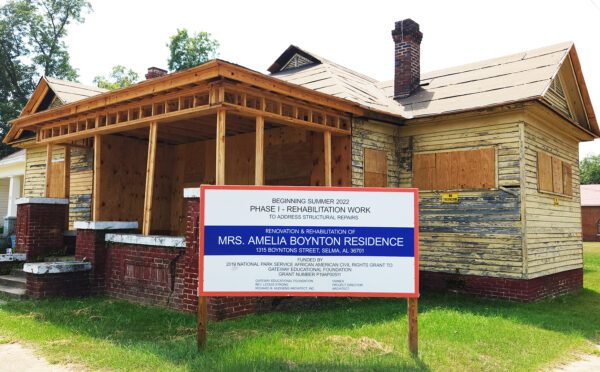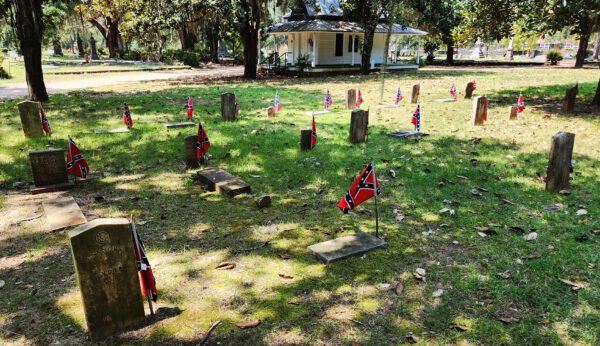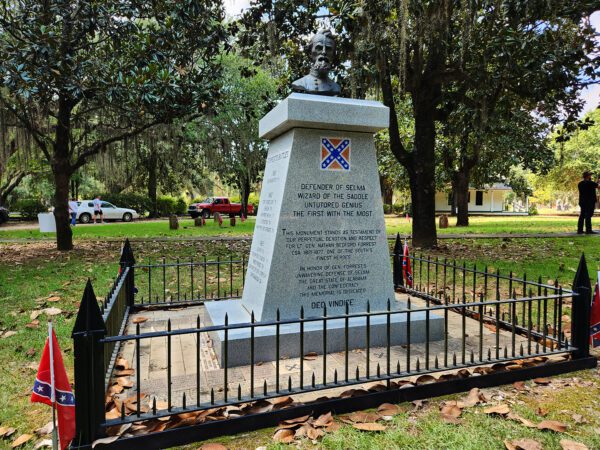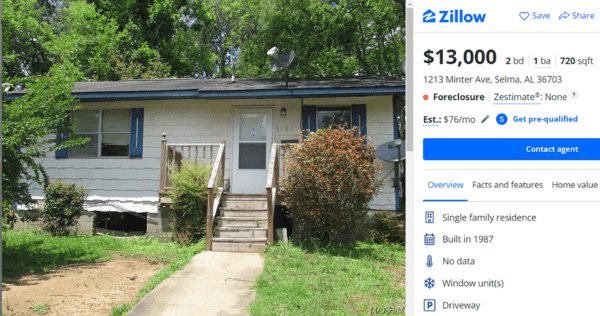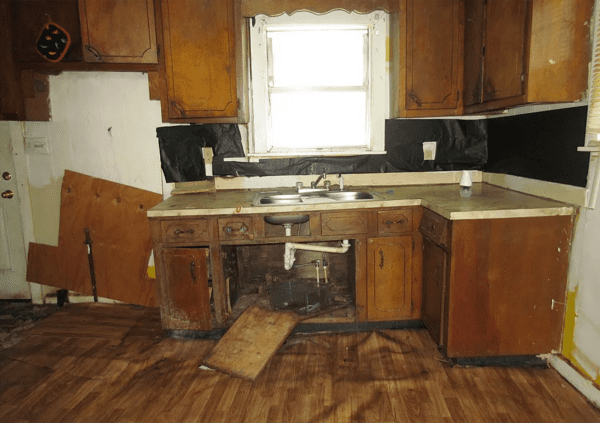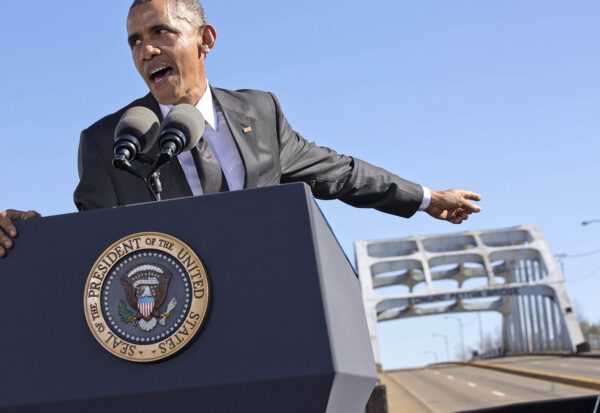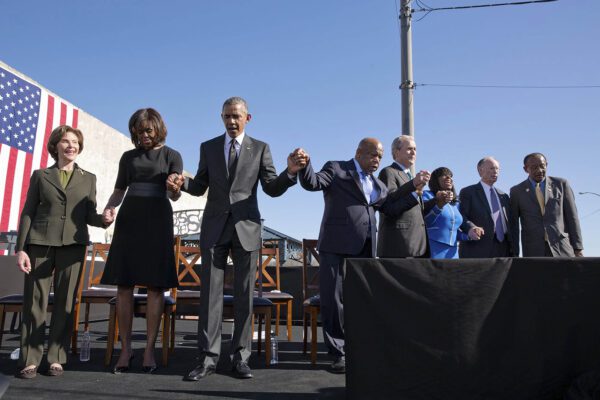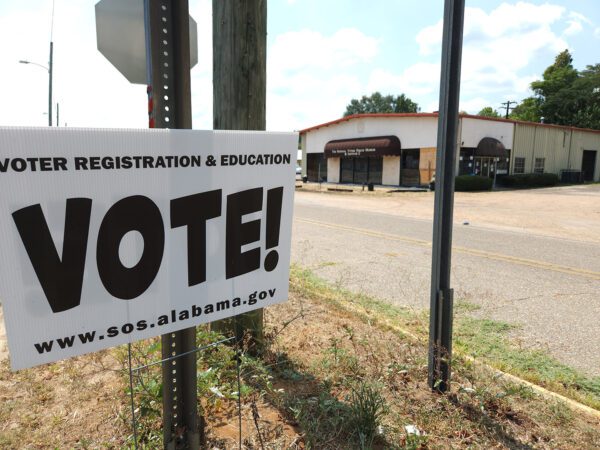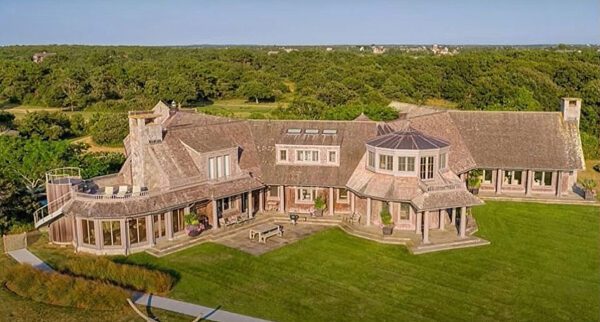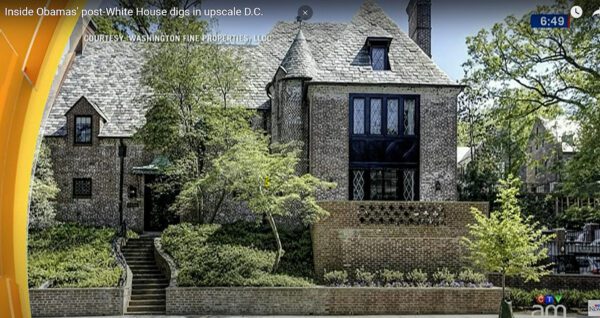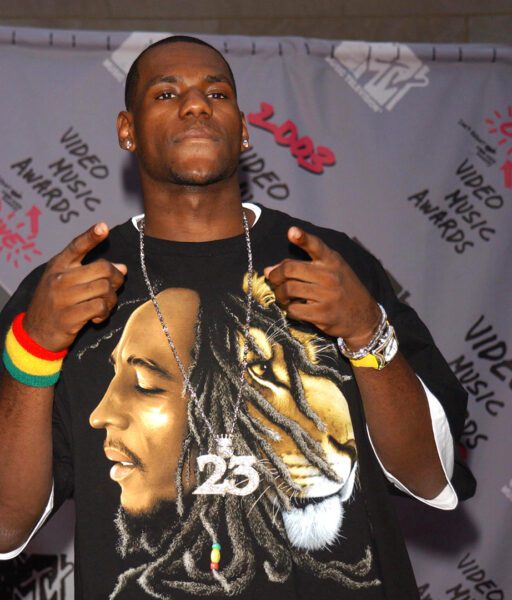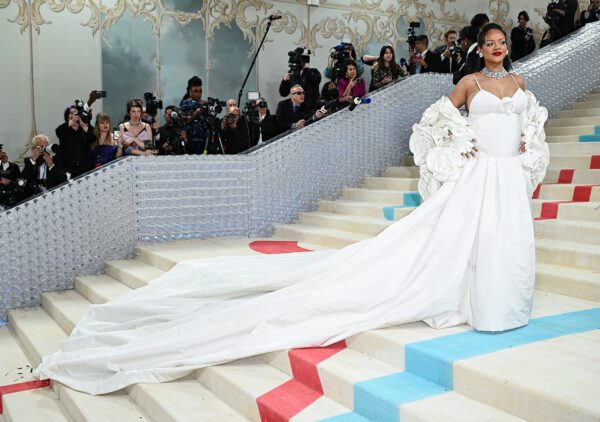This video is available on Rumble, BitChute, and Odysee.
Selma, Alabama is one of the high holy places of the Civil Rights Movement. The 1965 march across the Edmund Pettus Bridge, or what became known as “Bloody Sunday,” is supposed to be such an earth-shaking event in the liberation of black people that US Presidents often fly in, link arms with black worthies and white wannabes, and walk across the bridge.
Here’s Joe Biden performing the obligatory ceremony this year, along with that champion of equal rights, Al Sharpton. Al is holding hands with Jesse Jackson in a wheelchair. [Video]
Mr. Biden gave a pep talk. “We should learn everything. . . . Everyone should know the truth of Selma.” I agree.
The truth of Selma is that it is an appalling dump.
“Historic Selma” became “historic” only as part of the movement for black voting rights.
In the 1960s, to vote in Alabama, you had to pay a poll tax, pass a literacy test, and know something about the Constitution. This kept some white people and almost all black people off the rolls. Black leaders decided to protest this system by marching 50 miles from Selma to Montgomery, the Alabama state capital. Much of the route was two lanes, and hundreds of marchers would have been a traffic hazard, so Governor George Wallace refused to grant a permit. On March 7, 1965, 600 people marched anyway, and the first leg out of Selma was over the Edmund Pettus bridge across the Alabama River.
State troopers and sheriff’s deputies met the march and a voice boomed out over a PA system. “This is an illegal assembly. Disperse and go back.”
The marchers refused, and the standoff lasted about 15 minutes, while some marchers knelt and prayed. The police issued a two-minute warning. They then marched forward with batons held horizontally. There was resistance, mayhem, clouds of teargas, and forcible removal of marchers.
Scores of blacks were clubbed, several of them bloodied and 17 had to go to the hospital. Eighteen officers were also injured.
This set-to put Selma on the map. The town is now 80 percent black, and has a population of 18,000.
That is down 37 percent from its population in 1965, when the town was half black but run by whites. Industry left with the whites, and as Wikipedia explains, “The city now is focusing its income on tourism for its major influence in civil rights and desegregation.”
It’s doing a terrible job. The other day I drove with a few people to the very site of Bloody Sunday, at the end of the Pettus Bridge. There I found the National Voting Rights Museum & Institute.
Believe it or not, this wreck, patched with a sagging plywood wall, is a functioning museum, but this celebration of “Bloody Sunday” is closed on Sundays.
Next door are garages, explaining that “Education is the key to control our destiny.”
You will note that the saga of American blacks begins in Egypt, from which they were apparently shipped as slaves to America.
These black Union troops do not look as though they will be marching any time soon.
Black history progresses across the Pettus Bridge, to Barack Obama, to the message: “From kings and queens to presidents.”
Across the street, still at the foot of the bridge, is this Monument to Martyrs, so badly maintained the text is illegible.
This lamp pillar is missing so many bricks, it could fall over any time.
The Bridge Crossing Jubilee Headquarters & Souvenir Shop is also in the same location.
Unfortunately, it, too, is padlocked on Sundays and Mondays.
The locale is not prepossessing; the maintenance crew must have been off that week.
On the side of the headquarters building is a tribute to Martin Luther King.
Right next to that is a sculpture honoring Dr. King and his wife: “Love is the bedrock of justice and freedom.”
Doc is known to have had at least 40 different extramarital lovers. This crumbling thing doesn’t seem to lead anywhere.
The best maintained memorial in this cluster is a historical marker about lynching in Selma.
This electronic message board, “Do something for Selma,” was not working.
We crossed the bridge into Selma proper and were immediately greeted by these buildings.
Here is another downtown building that has seen happier times.
This is an especially terrifying downtown building.
The Selma Times-Journal continues to publish, thanks to its corporate owner, Boone Newspapers.
You can see the arch of the Pettus Bridge just to the left. Alas, the building to the right, the former home of the National Voting Rights Museum, is a shuttered hulk.
It appears to be abandoned, but it sports a sign directing history-minded visitors to the tumble-down museum we visited on the other side of the bridge.
At the bottom, please note that someone has added an invitation to white people that reads: “Come to Selma to feel bad so you can feel good about yourself.” There must be a few white people left in Selma who have a nice sense of irony.
Water Avenue was once a thriving, river-front commercial street, but as we drove down it, nothing was open, and most of the buildings seem to be abandoned. The only cars you see in this video belonged to white tourists who seemed to be lost. The street was otherwise vacant. This area seems to have been taken over by a series of black uplift establishments that are faring even worse than the National Voting Rights Museum.
Here you will find the African Art Exhibit, but it is boarded up.
At the lower left, is an invitation: “Drink from the fountain of African wisdom and be renewed.”
I was hoping for wisdom and renewal, but the fountain was dry.
Next door is the Enslavement and Civil War Museum, which continues the black pharaohs theme.
It was not open when we visited, and from the looks of the broken windows, it’s not in business.
Another downtown Water Avenue landmark is The Harmony Club, which was built in 1909 by Jewish citizens of Selma.
A group of white developers bought the building a year and a half ago and plan to spiff it up.
It’s on the National Register of Historic Places, so I’m sure they will do a fine job. But not yet.
Outside of downtown, we found more traces of Selma’s now-departed Jewish community: this boarded-up synagogue, next door to a defunct “carpet center.”
As is common in Africa, many establishments in Selma have their name and business painted on the wall.
Mostly we saw ruin: a sad succession of tumble-down houses that are probably beyond redemption.
A surprising number of them still appear to be at least partially inhabited.
One of the saddest sights was the abandoned Good Samaritan Center.
This was once a hospital, known as Good Sam, where people hurt on Bloody Sunday went for treatment.
This is a city of blasted buildings. This was probably torn up by a hurricane.
This rail car isn’t going anywhere.
Here is a future education center.
We wished it well. This seems to be a perfectly operable school bus.
The razor-wire fence behind it is squashed. I suspect a careless driver backing up ran into it.
The building in the background was once an academic administration building, but it’s clearly out of action.
Behind this abandoned gas station rises the Selma water tower.
Here you can read the writing on the tower: “Selma: a nice place to live.”
This is the former home of Amelia Boynton, reportedly another “civil rights icon,” though I had never heard of her.
Doc himself is said to have set foot in this house, but the owners let it fall apart, like all the houses around it, and the National Voting Rights Museum bought it.
Yes, that is the group we saw earlier, that can’t take care of its own buildings.
According to a 2014 article in the Selma paper, the museum sold it in 2009 for $15,000 to the black-run Gateway Educational Foundation.
The total cost of restoration was projected to be an eye-popping $945,000. The house was expected to be a fully functioning wax figure and civil rights artifact museum by July 2015.
It missed its target. Now, the National Park Service has promised to fix it up, and work was supposed to have started a year ago. Progress appears to be slow.
The nicest place in town is Live Oak Cemetery with its nicely tended Confederate graves.
There is even a handsome monument to Nathan Bedford Forrest, who fought his last battle here.
Selma would be a perfect place for white liberals to gentrify. You can get in on the ground floor with this cozy bungalow for just $13,000 – less than you paid for your last car.
It looks like it could use a little interior work.
What’s holding up the urban pioneers?
But the real question – the heart-rending question – is why blacks don’t do something about this derelict town and its embarrassing, so-called museums. Barack Obama, held forth indignantly on the 50th anniversary of “Bloody Sunday.”
Credit Image: © Pete Souza/The White House/ZUMAPRESS.com
He held hands with Michelle, John Lewis, and George and Laura Bush. I bet they sang “We Shall Overcome.”
Credit Image: © Pete Souza/The White House/ZUMAPRESS.com
They were all within spitting distance of the dilapidation I showed you earlier.
Even from a speeding limousine, you can see this place is a shambles.
How many houses does Mr. Obama have? Five? Six? If he could bear to downsize from his 29-acre pad on Martha’s Vineyard, he could really spruce Selma up.
Maybe he could part with this 9-bedroom joint in the ritziest part of Washington DC and give Selma a proper museum.
Black sports stars are rolling in dough.
Credit Image: © Andrea Renault/ZUMA Wire
Oprah Winfrey is a billionaire.
Credit: https://www.flickr.com/photos/aphrodite-in-nyc, CC BY 2.0, via Wikimedia Commons
So is Rihanna, whoever that is.
Credit Image: © Doug Peters/PA Wire via ZUMA Press
If they don’t care about this stuff, they better not expect us to. Why don’t they chip in?
I don’t get it. Or maybe I do. Let’s go back to the Bridge Crossing Jubilee Headquarters & Souvenir Shop and zoom in on the black and white sign in the lower left corner. “It’s about us.”
I think that about sums it up.
It’s about them.
- Post TagsAmerican History, Civil Rights Movement
